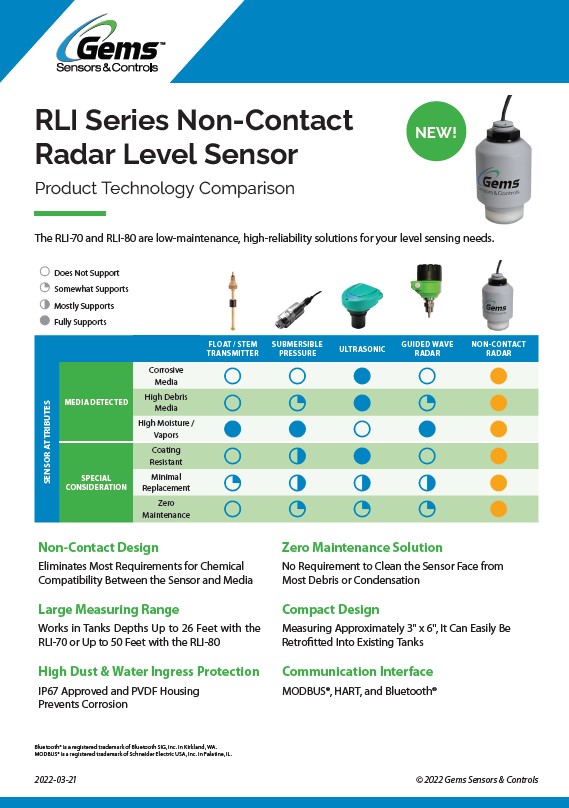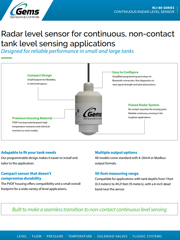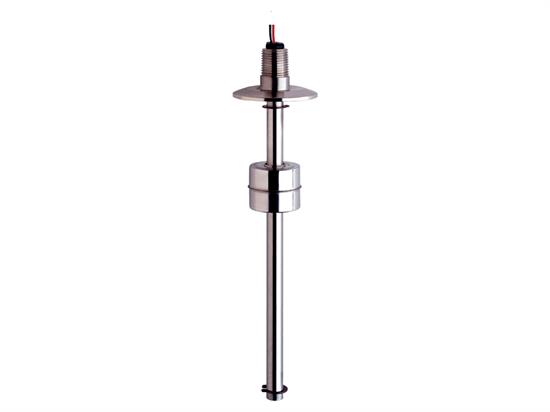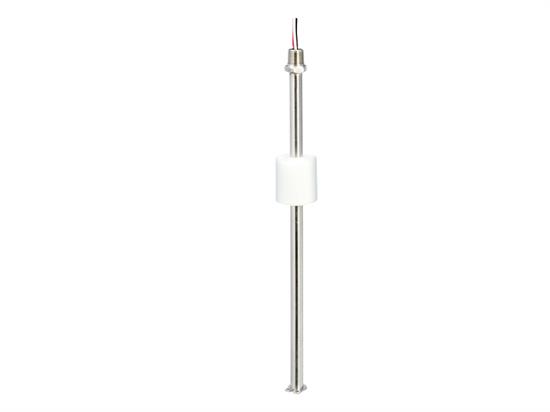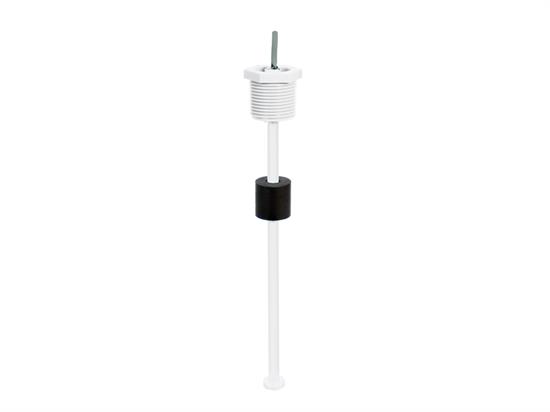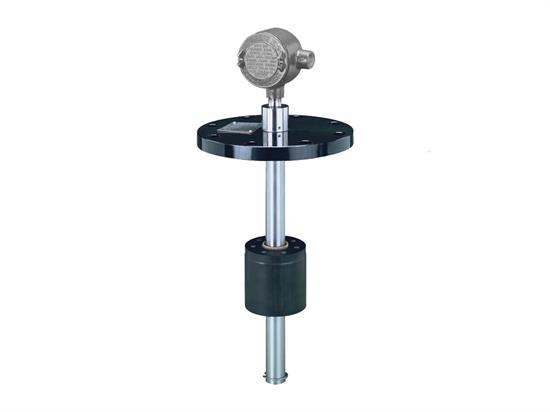Is one radar sensor sufficient to provide level measurement and overfill protection at the same time?
Yes, one sensor is sufficient. A redundant solution will provide more security, but Gems RLI-80 non-contact radar sensor can measure accurately even in high vapor, high turbulent applications.
How do radar sensors react to waves?
The influence of waves or turbulent water surfaces is minimal. With a wide dynamic range, Gems RLI-80 radar sensor measures even the smallest signals and can compensate for water movement very well. Moving surfaces are a standard feature in water applications. Regardless of whether a container is being filled or pumped down Gems RLI-80 radar sensor calculates an average value from multiple reflected signals.
Do radar sensors measure through surface sludge?
Sludge is very compact, and the microwave signal cannot pass through it. However, the surface height of the sludge can be detected accurately, allowing a reliable level measurement. In contrast to foam, which is generally easier to measure through,
this does not work with sludge. If it is necessary to determine the exact height of the sludge, this can be done by combining a radar sensor and a pressure sensor. The radar sensor detects the sludge surface, and the pressure sensor detects the water
level using hydrostatic pressure. The differential indicates the thickness of the sludge because its density is significantly different from that of water.
Response rate of the RLI-80?
The response rate, or how fast the sensor reacts to a change in the measurement output, depends on the type of output. RLI-80 sensors with 4-20mA outputs have a response rate of 2.5 seconds. RLI-80 sensors with Modbus outputs have a response rate of 0.5 seconds.
What approvals does the RLI-80 have?
The RLI-80 will have the following Intrinsically Safe approvals*: UL/c-UL for Class I, Division 1, Groups A, B, C, and D; Class II, Division 1, Groups E, F, and G; Class III, Division 1; Zone 0, Group IIC, AEx/Ex ia IIC T4 Ga; and ATEX/IECEx/UKEx Zone 0, Group IIC, II 1G Ex ia IIC T4 Ga. The sensor requires appropriate intrinsically safe barriers to render the sensor intrinsically safe. Please see the Data Sheet for more information on suggested barriers and the wiring diagrams. *Approvals scheduled to be complete in May 2022. Contact Gems for approvals certificates.
Do radar sensors also measure bulk solids?
Yes, Gems RLI-80 non-contact radar level sensor is suitable for measuring bulk solids. The measuring ranges are the same for liquids and solids. Gems RLI-80 radar sensor is not only suitable for water and wastewater, but also for other media with dielectric constants of 2 or greater. From water-based products, chemicals, acids, and alkalis to auxiliary substances used in the wastewater industry and chemical products. They can also be used in all kinds of bulk solids applications like building materials, grain, and many others.
Are there signal outputs other than 4 to 20 mA?
Yes, Gems RLI-80 non-contact radar level sensor comes standard with 4-20mA output/HART, and Modbus. With Modbus, the instruments can be easily connected to existing data loggers. Gems’ radar level sensor also comes standard with Bluetooth connectivity for simple configuration and diagnostics. Review all the specifications
here.
Does the sensor always need a controller?
No, Gems RLI-80 non-contact radar level sensor has 4-20 mA, Modbus, or HART directly as cable output. However, using a controller makes sense if, for example, an additional display is needed to provide more clarity on site. Pump or valve control can also be realized with a controller.
Are there any disadvantages to radar?
No, radar technology is not affected from moisture, vapor, or dust in the air like Ultrasonic sensors are. With competitive prices for Gems RLI-80 non-contact radar sensor it is a simple decision to switch to radar technology.
How do you calculate the beam width of the Radar signal?
Gems RLI-80 non-contact radar level sensor sends out an 8-degree beam. Please review the beam width calculator to calculate the width at various tank depths. The beam can encounter the side of the tank, if there are no obstructions on the outside of the tank, as those can reflect the signal and cause an inaccurate reading.
Can you place the Non-Contact Radar Sensor in a standpipe?
Yes, Gems RLI-80 non-contact radar level sensor can be placed in a metal standpipe, 2.5” minimum diameter.
What is dielectric constant?
Dielectric Constant is the ratio of the permittivity of a material to the permittivity of free space. In other words, it is the measurement of electric flux that will concentrate within a material. Gems RLI-80 radar level sensor requires a dielectric constant of 2 or greater. Learn more about dielectric constant and common liquids with proper dielectric constant to work with Gems RLI-80 radar level sensor here. You do not need to set the dielectric; the sensor will work automatically if the media has a dielectric of 2 or greater.

 SEARCH OUR RESOURCE CENTER
SEARCH OUR RESOURCE CENTER

.png?Status=Master&sfvrsn=a3f21214_7)
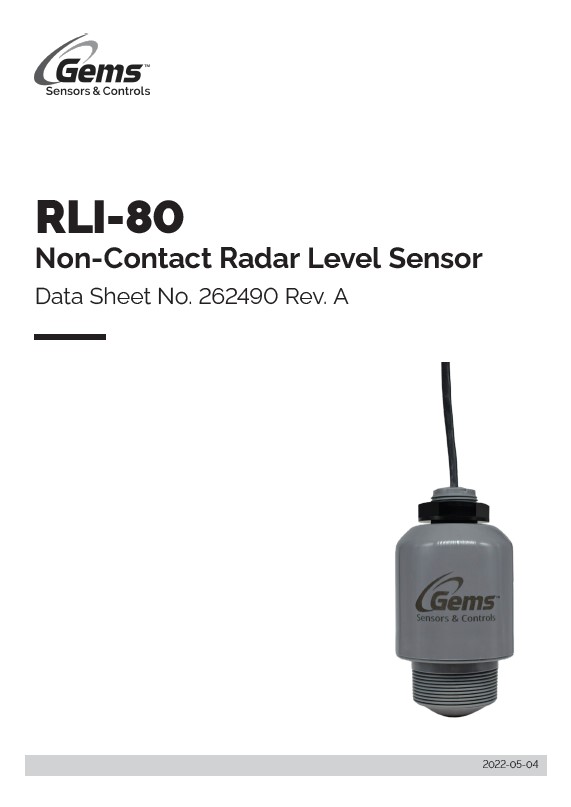
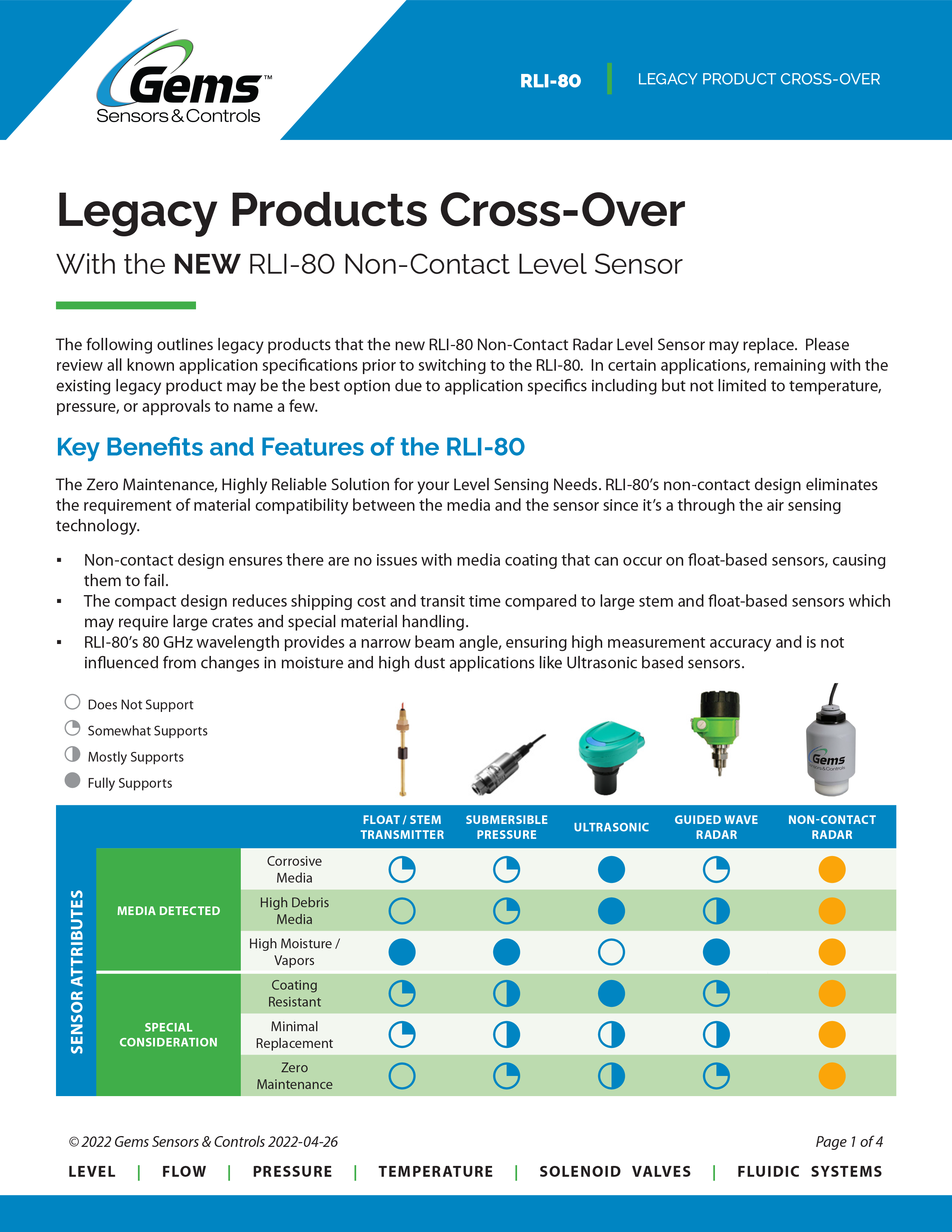
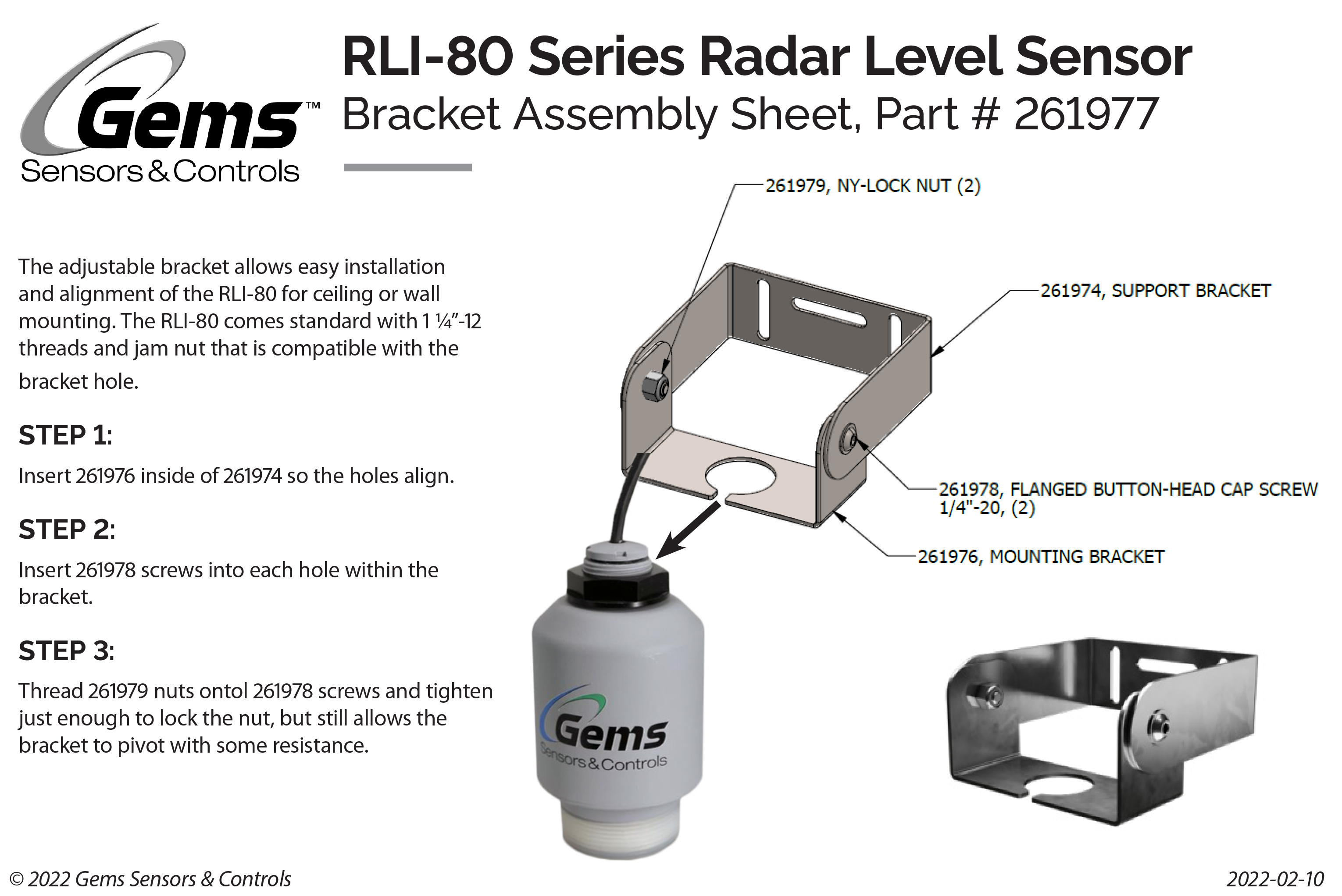
.jpg?Status=Master&sfvrsn=9bdf8318_0)
